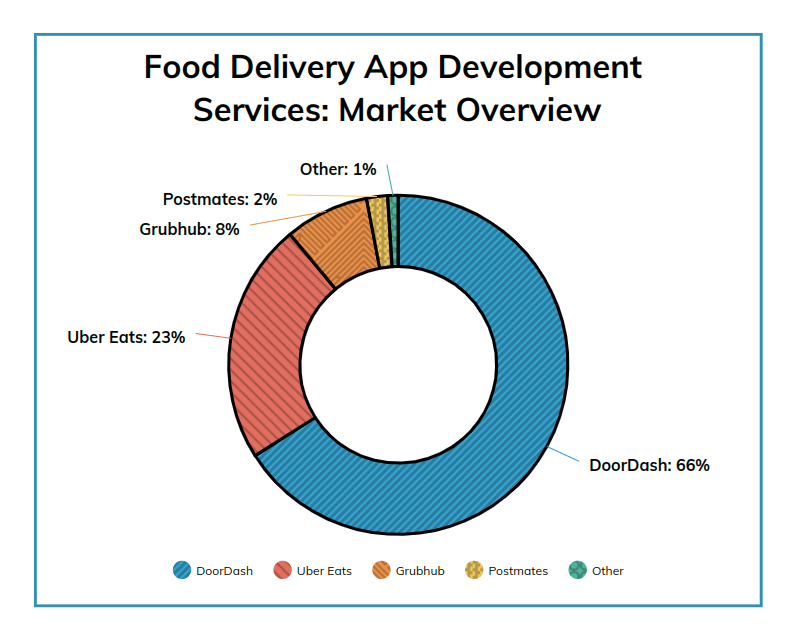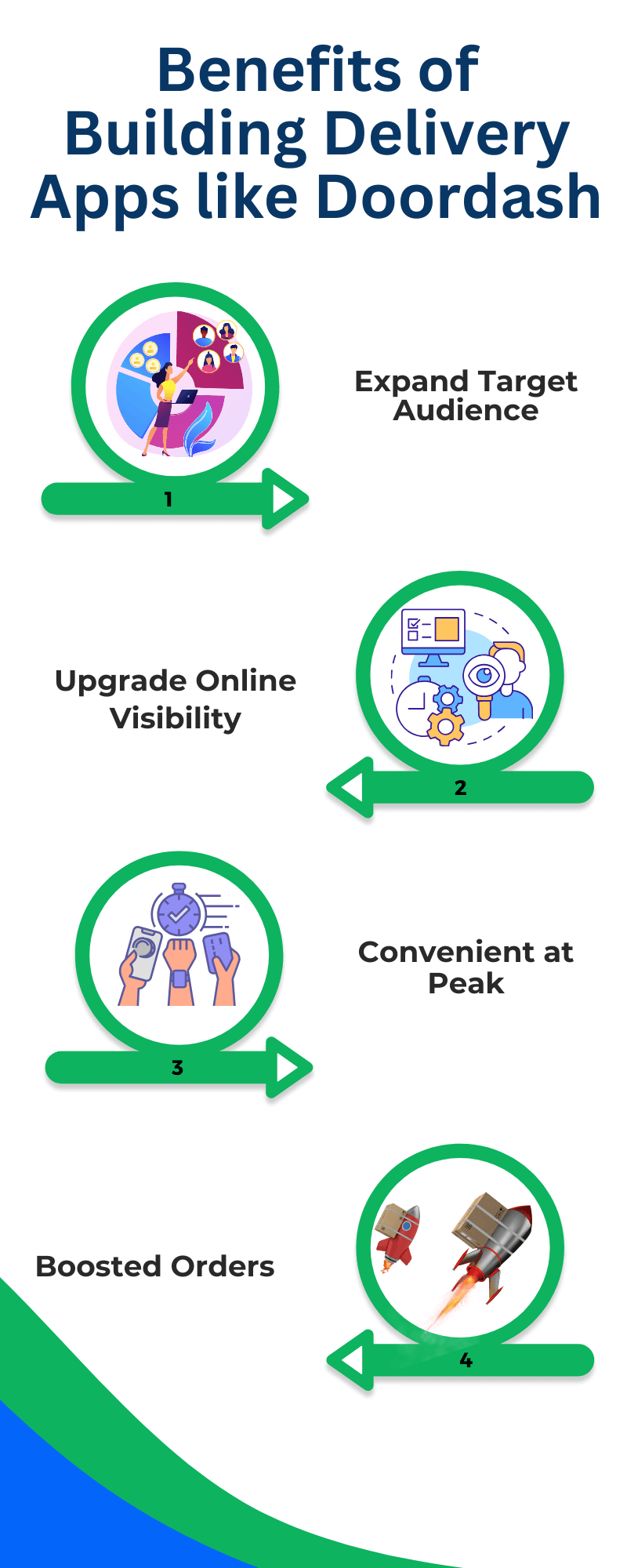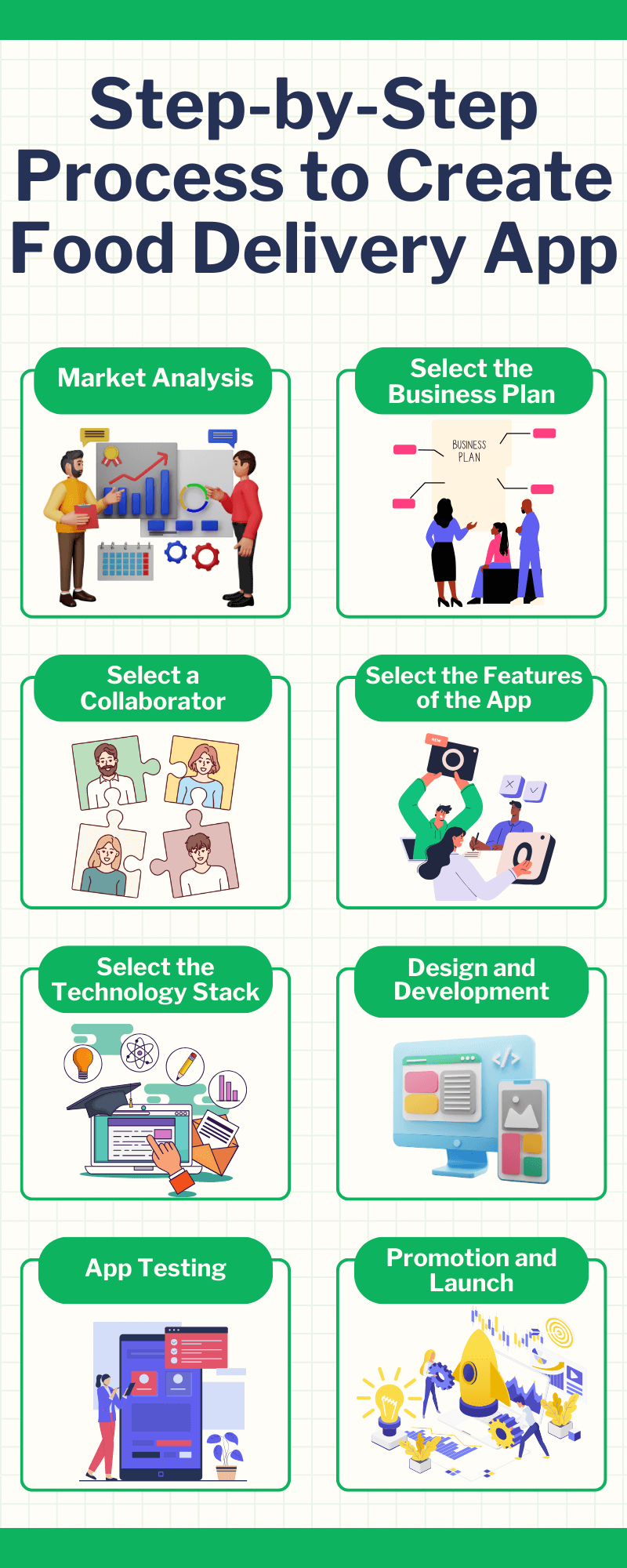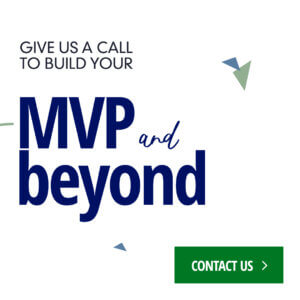Table of Contents
Are you thinking about developing an on-demand food delivery mobile app to compete with market leaders like Zomato and Uber Eats? Or are you the owner of a food delivery company and want to expand your customer base by going online? Either way, launching a food delivery app might be a wise and remunerative endeavor, given the extended need for online food delivery services.
However, how can you ensure that your app attracts your target audience and closes the gap in the market? We will walk you through building a dependable food delivery app that is equipped with essential features and functionalities. With our professional food delivery app development services, you can be sure that the user experience will be immaculate.

Food Delivery App Development Services: Market Overview
One of the ever-evolving businesses worldwide is food delivery application development. The growing client base for meal delivery primarily encourages such an upgrade for multiple reasons.
- As per the data of Business of Apps, the food delivery app industry is anticipated to expand to $165 billion by 2029.
- Statista concluded that DoorDash conquered a market share of 66% by January 2023 in the food delivery market in the United States. Meanwhile, Uber Eats has the second-highest percentage, with 23% in the food delivery market.
- The number of users is forecasted to increase significantly in all segments. This mirrors the prevailing trend throughout the complete forecast period from 2018 to 2028. Keeping that in mind, the Meal Delivery segment will gain the most elevated value of 192.62 million users in 2028.
After that, there is a heap in food delivery app development companies due to such an unprecedented transition.

Benefits of Building Delivery Apps like Doordash
Whether a newly launched restaurant or a widespread local choice, integrating delivery apps like Doordash into your business pinnacle can be a distinguished method to expand deals, reach, and profitability. Now more than ever, the benefits of pickup and delivery app development are abundant. Considering the transnational situation is a persistent stream of transitions and anticipation, food delivery qualifies restaurants to cater to customers who prefer dining, take-out, or delivery options. With exemplary food delivery services offered by apps like Doordash, new food startups or established food chains can stay relevant in these technologically advanced times.
1. Expand Target Audience
When businesses build delivery apps, one advantage they benefit from is the online reach of technology to your restaurant in front of a wide range of demographics. For instance, DoorDash targets 94% of the US, 75% of the Canadian, and 80% of the Australian population. You must reach as many potential customers as possible, keeping in mind that 77% of United States customers order food delivery at least once a month.
2. Upgrade Online Visibility
Marketing expenses can be eliminated when food chain businesses consider the built-in tools of a third-party platform. Restaurants can utilize widespread reach and elevate their online reputation and SEO without up-front expenses. Reenergized and new consumers can find your restaurant, browse your menu based on people’s preferences, and order their meals from the DoorDash-like app.
3. Convenient at Peak
Restaurant managers must try to offer consumers what they expect to withstand the competition. When it comes to comfort and convenience, the usefulness of food delivery ticks all the boxes. A recent study published by Nation’s Restaurant News in the United States implied that 77% of customers look forward to speed and restaurant variety.
4. Boosted Orders
Businesses can boost daily orders when they create a food delivery app with built-in upsell features similar to DoorDash. When offered upsell features that include add-on food recommendations for desserts, sides, and beverages at checkout right before payment, customers frequently add last-minute extras to their carts.
Must-Have Features of Food Ordering App for Restaurants
Our extensive research gathered a complete list of features that one must enclose to build a food delivery app ordering platform.
Let’s have a look at the most recent updates.
- Customer application: Allows users to order and deliver meals from neighboring establishments.
- Restaurant application: Fine establishments and food chains can observe and manage orders.
- Courier application: Delivery partners are notified of new orders and may view the order’s status and details.
- Control panel for administrators: An admin panel allows the owner and their professionals to manage the platform.
Let us dive deep and understand the essential features of end-to-end food delivery app development.
1. Client-Side Version
For users, an online food ordering procedure should be visually appealing and as simple as possible. The main goal is to make it possible for customers to place purchases quickly and easily. From a technical standpoint, the application’s customer-facing version ought to have the following features:
-
User Profile
It includes payment methods, client information, preferences, and other relevant data. It may be made valuable by retaining the address so you don’t have to enter it every time, storing orders so they can be rehearsed, etc.
-
Real-Time Tracking and Delivery
The real-time delivery tracking tool shows the courier’s predicted arrival time. Another helpful feature is tracking an order’s progress at any moment.
-
Payments
Fee functionality should be technically sound and aesthetically pleasing to evoke a sense of security. Various payment options, repeat payments, card verification, and other techniques can speed up and secure payment.
-
Ratings and Testimonials
Customers should familiarise themselves with meals before placing an order, and reading reviews and thoughts on the company and the world is the simplest method to accomplish this.
-
Push Notifications
You may use this feature to receive notifications when an order’s status changes quickly.
2. Restaurant App
It all comes down to taking orders, monitoring alerts, and updating menus. Such food delivery app development solutions for restaurants could appear on a kitchen tablet as a native or web-based application. Restaurant staff will use this software to track incoming orders and alert the courier when a dish is ready. The main components of the app have slightly varied goals.
-
Registration and Authentication
Employees can log in and view incoming orders on this website.
-
Management of Menus
Restaurants must update their menus so that patrons ordering a meal see the most recent details. If not, this might negatively impact the company’s reputation and service.
-
Management of Orders
All incoming orders must be understood by restaurant staff, and they must handle them with efficiency. This feature allows them to receive orders and change their status.
-
Ratings and Testimonials
Give restaurant owners the ability to see reviews and comments and remember to respond. Communication with customers is essential.
3. Courier Version
In a food ordering app, the courier is the most critical link in the chain that connects a client and a business. Given that the restaurant’s productivity determines its efficiency, the food app’s courier version ought to include the following features:
-
Courier Profile
This gives the courier access to a wide range of information, including the number of deliveries made, client evaluations, job-related remarks, and more.
-
Order Processing
Accepting or rejecting orders, verifying information, providing comments, and performing other actions facilitates quick order processing.
-
Delivery Status
A delivery app development company may add this feature to give couriers real-time access to information on the order’s quality, specifics, and other pertinent elements.
-
The Locations and the Routes
The courier must provide a comprehensive map outlining all the locations and the most efficient routes thereto. Productivity, logistics, and delivery time will all rise as a result.
4. Admin Version
Any job that involves human interaction will inevitably involve conflicts and difficulties. There are extra worries and issues while operating a food delivery service. The administrator resolves them. He is also in charge of taking orders, collecting money, and monitoring the performance of the couriers. The following characteristics are required for the administrator’s version of the application:
-
Personal Information
Other profiles are available for the courier and the customer. This would help with job organization and improve customer communication.
-
Managing Content
Offering further content management tools, such as the ability to ban particular restaurants or meals, add new goods, and change prices, would be beneficial.
-
Order Processing
The administrator accepts all online orders and processes them as quickly as possible. If an aggregator creates the app for your café or restaurant, orders are routed to the establishment; if not, the company handles order processing.
-
Payment Receiving
The payment capability is part of the client-side application. Administrators should be granted access to data such as payment status, receipts tables, and other pertinent information.

Step-by-Step Process to Create Food Delivery App
To create a delivery app, we recommend that you adhere to these tried-and-true procedures:
1. Market Analysis
Examine the various food delivery apps, focusing on user flows and interfaces. Next, identify a market issue you can resolve for your target audience with MVP app development. You can specify who the target audience is. After you have a firm understanding of your target audience, you may more easily define objectives and tasks for your project by investigating their online habits, preferences, and specific requirements.
2. Select the Business Plan
With the information from the first stage, you can pick a business plan for your future app. You can choose a single payment plan where customers only pay once to install your software, charge for advertisements or delivery costs, or provide premium subscriptions. This stage aims to identify a company plan that will both please your clients and give you a reliable source of income.
3. Select Food Delivery Application Development Partner
You may work with freelancers, assemble your team, or locate a reliable app development agency. The latter choice often works best because outsourcing app development is less expensive than keeping an internal staff and far more efficient than working with freelancers. Before employing a candidate, consider their portfolio and prior experience working on projects comparable to yours.
4. Select the Features of the App
The precise feature set will depend on the kind of software, the desired user experience, and the requirements of your intended market. Consult experts when choosing which features to add during online food delivery app development. Define the extent of the task, discuss your thoughts, and pay attention to their expertise. Don’t attempt to incorporate every feature at once. It would be best to do this once the MVP has been released and user input has been gathered.
5. Select the Technology Stack
When discussing the technological stack, remember that the decision you make at this stage will affect the program’s overall functionality. Specific systems, for instance, are better suited for managing comprehensive restaurant menu listings and databases, while other solutions provide interactive elements and real-time changes. If you’re not sure which tech stack to select, that’s acceptable. Give it to your on-demand app development partners to handle.
6. Food Delivery App Design and Development
At this point, the experts will take over. Qualified designers will handle your visual mobile app design. You can offer suggestions and minor corrections; the team will handle the remaining tasks. After the procedure is complete, it will be time to create the food delivery application. All you need to do is unwind and wait for your app’s initial release to launch.
7. App Testing
Take your time testing the app to ensure everything functions as it should. Don’t rush. After extensive testing, your consumers will receive a practical and functional answer to their daily issues.
8. Promotion and Launch
At last, you may run your app and observe how your concept is implemented into a functional utility. Promote your software to draw in more users and gather frank comments.
The food ordering app development process’s three versions should incorporate these functionalities. The user selects the remaining features based on budget, time allocated, establishment needs, etc.
What is the Estimated Food Delivery App Development Cost?
Mid-sized food chain businesses or established fine-dining restaurants must ensure that the food delivery app fits their budget. Understanding development capital investment is essential for any type of business, regardless of size.
Determining the estimated capital investment of food delivery applications might be challenging since several elements must be considered. For instance, the complexity of the app, business-centric requirements, determined platform, software, and technology needs, and the development team you will hire to develop the app.
Cost to develop a food delivery app ranges from $15,000 to $60,000, and depending on the abovementioned elements, it can be even more expensive. Therefore, picking a suitable business that meets your budget limitations and needs is essential.
However, why do the prices differ so much? And what additional elements influence the app development cost? App features provide the solution. To create a competitive meal delivery app, you need basic and sophisticated capabilities for each of the four apps—customer, service provider, admin, and delivery agents.
Why is AppsChopper the Best Out of Food Delivery App Development Companies?
Do you aspire to create your on-demand food delivery app solution? We comprehend how challenging it may be to form an exemplary team that recognizes your vision. AppsChopper understands the need for professional developers and a reliable team of experts.
AppsChopper understands that your food delivery app for entrepreneurs must be distinctive and customized to meet your particular needs in context to the users. We have the perfect combination of expertise and technological capabilities to deliver functional food delivery apps. Our team of specialists concentrates on providing exceptional on-demand food delivery app development services.
Additionally, we guarantee food delivery mobile app development services if businesses are searching to build an app like DoorDash, Uber Eats, or other well-known food delivery companies.








